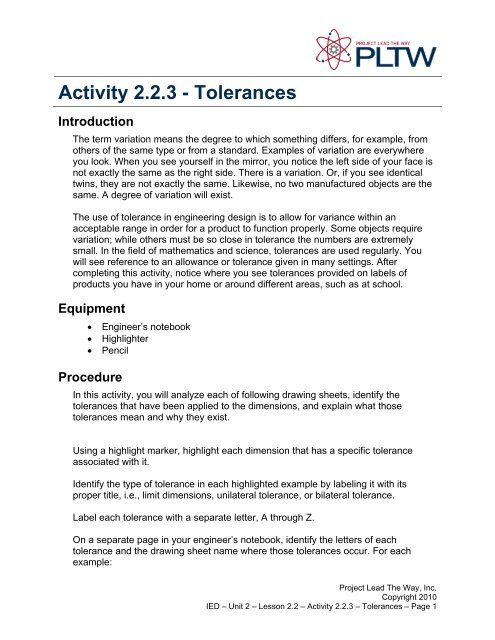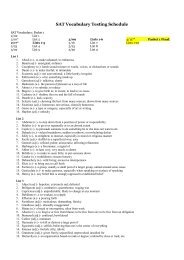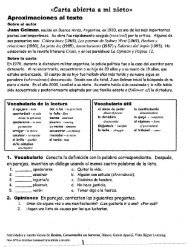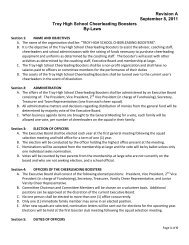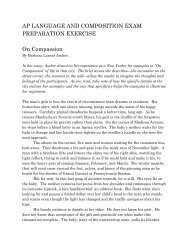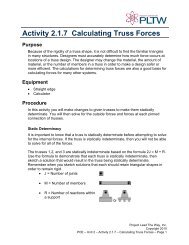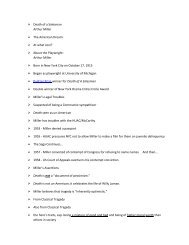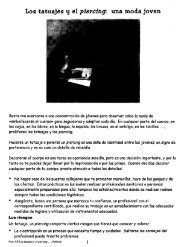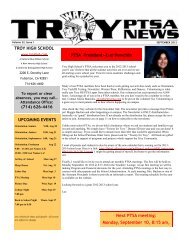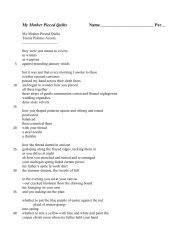Activity 2.2.3 - Tolerances - Troy High School
Activity 2.2.3 - Tolerances - Troy High School
Activity 2.2.3 - Tolerances - Troy High School
- No tags were found...
Create successful ePaper yourself
Turn your PDF publications into a flip-book with our unique Google optimized e-Paper software.
<strong>Activity</strong> <strong>2.2.3</strong> - <strong>Tolerances</strong>IntroductionThe term variation means the degree to which something differs, for example, fromothers of the same type or from a standard. Examples of variation are everywhereyou look. When you see yourself in the mirror, you notice the left side of your face isnot exactly the same as the right side. There is a variation. Or, if you see identicaltwins, they are not exactly the same. Likewise, no two manufactured objects are thesame. A degree of variation will exist.The use of tolerance in engineering design is to allow for variance within anacceptable range in order for a product to function properly. Some objects requirevariation; while others must be so close in tolerance the numbers are extremelysmall. In the field of mathematics and science, tolerances are used regularly. Youwill see reference to an allowance or tolerance given in many settings. Aftercompleting this activity, notice where you see tolerances provided on labels ofproducts you have in your home or around different areas, such as at school.EquipmentProcedureEngineer’s notebook<strong>High</strong>lighterPencilIn this activity, you will analyze each of following drawing sheets, identify thetolerances that have been applied to the dimensions, and explain what thosetolerances mean and why they exist.Using a highlight marker, highlight each dimension that has a specific toleranceassociated with it.Identify the type of tolerance in each highlighted example by labeling it with itsproper title, i.e., limit dimensions, unilateral tolerance, or bilateral tolerance.Label each tolerance with a separate letter, A through Z.On a separate page in your engineer’s notebook, identify the letters of eachtolerance and the drawing sheet name where those tolerances occur. For eachexample:Project Lead The Way, Inc.Copyright 2010IED – Unit 2 – Lesson 2.2 – <strong>Activity</strong> <strong>2.2.3</strong> – <strong>Tolerances</strong> – Page 1
Hole BlockProject Lead The Way, Inc.Copyright 2010IED – Unit 2 – Lesson 2.2 – <strong>Activity</strong> <strong>2.2.3</strong> – <strong>Tolerances</strong> – Page 3
Conclusion1. Why do engineers place tolerances on dimensions?2. What are the three types of tolerances that appear on dimensioned drawings?3. What is the difference between a general and a specific tolerance, and how canyou tell the difference on a drawing?Project Lead The Way, Inc.Copyright 2010IED – Unit 2 – Lesson 2.2 – <strong>Activity</strong> <strong>2.2.3</strong> – <strong>Tolerances</strong> – Page 4


